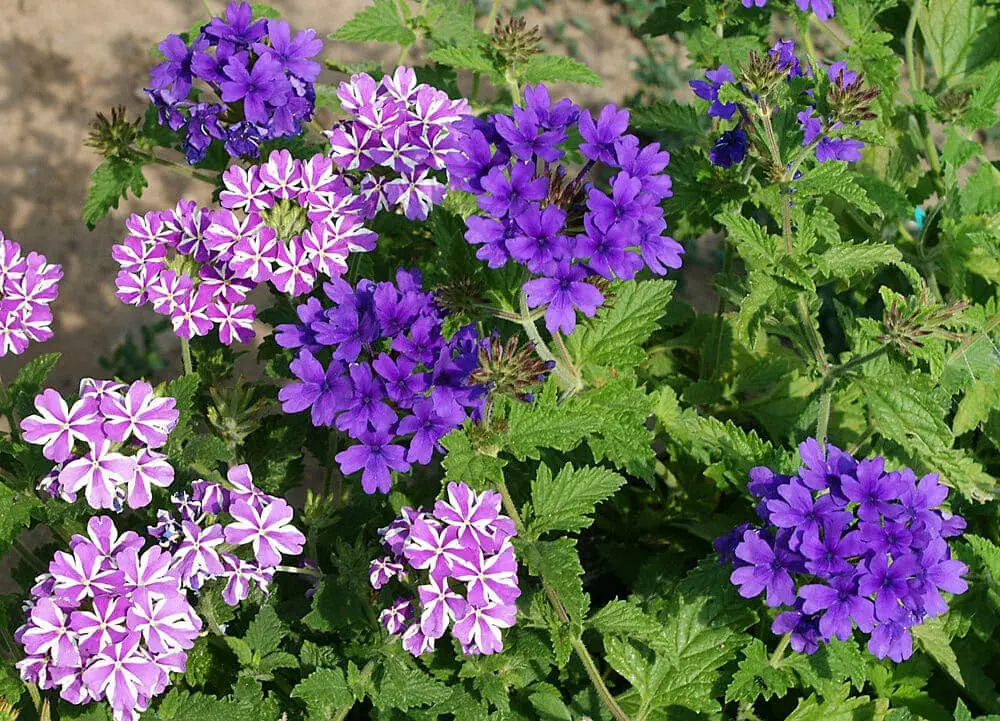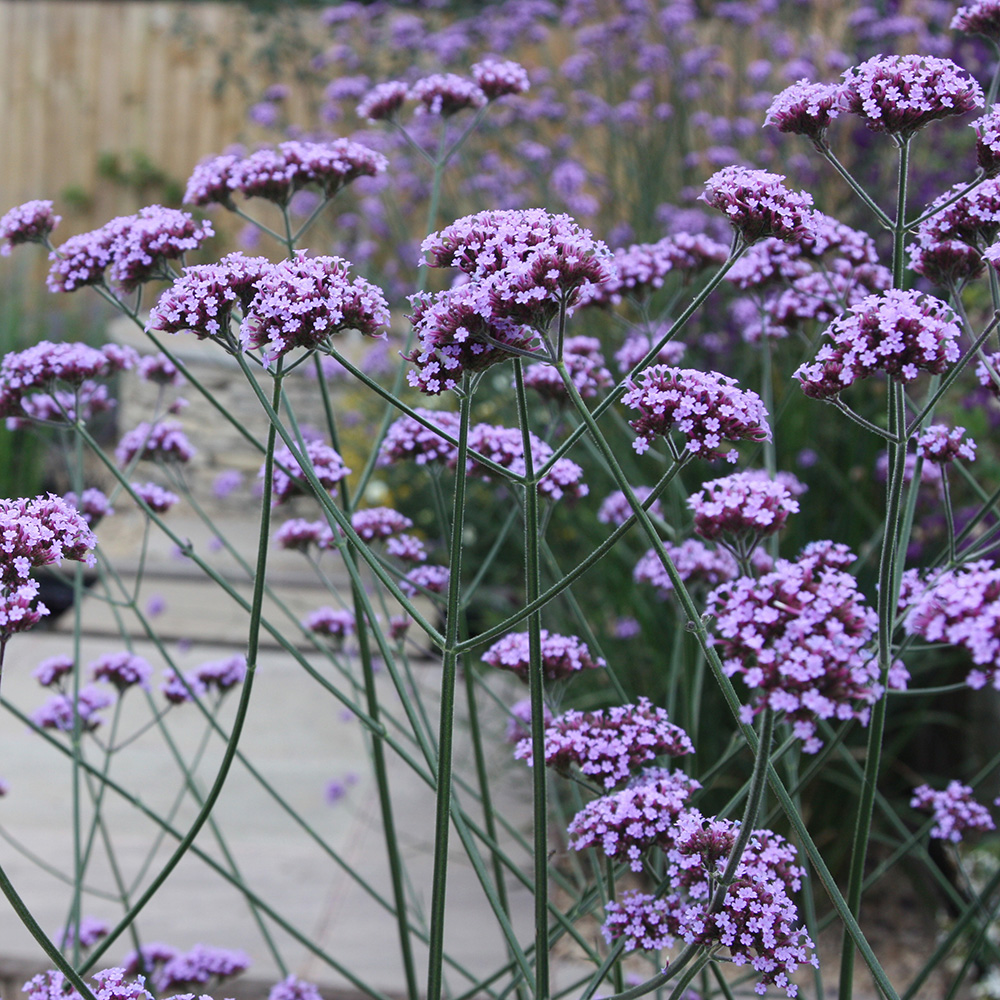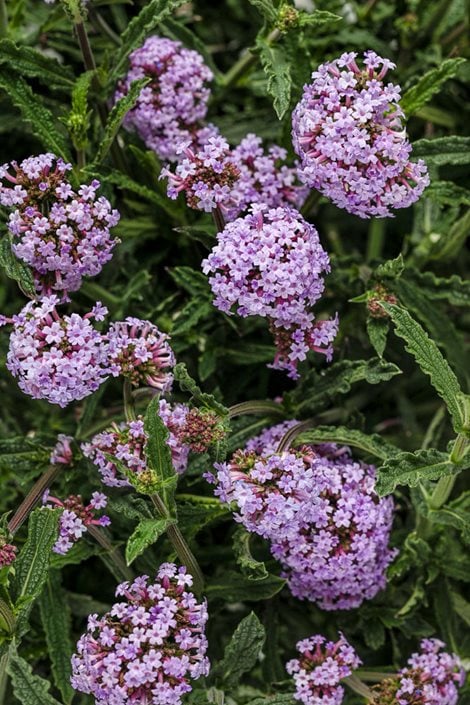Understanding Verbena Plant Classification
Verbena plants are a popular choice among gardeners due to their low-maintenance requirements and vibrant flowers. However, one common question that arises when growing Verbena plants is whether they are annual or perennial. To answer this question, it’s essential to understand the difference between annual and perennial plants. Annual plants complete their life cycle within a year, germinating, growing, producing flowers and seeds, and dying all within a single growing season. Perennial plants, on the other hand, live for more than two years, often regrowing new stems and leaves year after year.
Verbena plants are typically classified as perennials in warmer climates, where they can regrow new stems and leaves year after year. However, in cooler climates, Verbena plants may behave like annuals, dying back after the first frost. Other plants that are similar to Verbena in terms of growth habits and characteristics include Lantana, Zinnia, and Marigold. These plants are often used in similar garden designs and can thrive in similar conditions.
When determining whether a Verbena plant is an annual or perennial, it’s crucial to consider the specific growing conditions and climate. In general, Verbena plants grown in USDA Hardiness Zones 9-11 can be considered perennials, while those grown in cooler zones may need to be treated as annuals. By understanding the classification of Verbena plants, gardeners can provide the best possible care and ensure optimal growth and flowering.
How to Determine if Your Verbena Plant is an Annual or Perennial
Determining whether a Verbena plant is an annual or perennial can be a bit tricky, but there are several ways to make an educated guess. One way to determine the classification of your Verbena plant is to examine its growth habits. Perennial Verbena plants tend to grow more slowly and produce fewer flowers than annual varieties. They also tend to have a more compact growth habit and may produce woody stems.
Another way to determine if your Verbena plant is an annual or perennial is to examine its leaf structure. Perennial Verbena plants tend to have thicker, more leathery leaves than annual varieties. They may also have a more pronounced leaf vein pattern. Annual Verbena plants, on the other hand, tend to have thinner, more delicate leaves.
Flowering patterns can also provide clues about the classification of your Verbena plant. Perennial Verbena plants tend to produce flowers in the summer and fall, while annual varieties tend to produce flowers in the spring and summer. Perennial Verbena plants may also produce fewer flowers than annual varieties, but the flowers tend to be larger and more showy.
It’s also important to consider the climate and growing conditions when determining whether a Verbena plant is an annual or perennial. In warmer climates, Verbena plants may behave like perennials, while in cooler climates, they may behave like annuals. By examining the growth habits, leaf structure, and flowering patterns of your Verbena plant, you can make an educated guess about its classification.
For example, if you’re growing Verbena in a container in a cooler climate, it may be more likely to behave like an annual. However, if you’re growing Verbena in a garden bed in a warmer climate, it may be more likely to behave like a perennial. By understanding the classification of your Verbena plant, you can provide the best possible care and ensure optimal growth and flowering.
The Life Cycle of Verbena Plants: What to Expect
The life cycle of Verbena plants is a crucial factor in determining whether they are annual or perennial. Verbena plants typically go through four stages of growth: germination, growth, flowering, and seed production. During the germination stage, Verbena seeds sprout and develop their first set of leaves. This stage usually occurs in the spring or early summer, depending on the climate and growing conditions.
During the growth stage, Verbena plants develop their stems, leaves, and roots. This stage can last several weeks to several months, depending on the variety and growing conditions. Verbena plants typically grow to be around 1-3 feet tall and wide, although some varieties can grow larger.
The flowering stage is one of the most distinctive features of Verbena plants. Verbena flowers are typically small, fragrant, and come in a variety of colors, including pink, purple, and white. The flowering stage usually occurs in the summer and fall, although some varieties may bloom earlier or later.
After the flowering stage, Verbena plants produce seeds. This stage is critical for the plant’s survival, as it allows the plant to reproduce and spread. Verbena seeds are typically small and dry, and can be harvested for replanting or saved for future use.
The life cycle of Verbena plants affects their classification as annual or perennial. Annual Verbena plants typically complete their life cycle within a year, while perennial Verbena plants may take several years to complete their life cycle. Perennial Verbena plants may also regrow new stems and leaves year after year, while annual Verbena plants typically die back after the first frost.
Understanding the life cycle of Verbena plants is essential for providing proper care and maintenance. By knowing what to expect at each stage of growth, gardeners can provide the best possible conditions for their Verbena plants to thrive. Whether you’re growing Verbena as an annual or perennial, understanding its life cycle can help you enjoy its beautiful flowers and fragrance for years to come.
Factors Affecting Verbena Plant Longevity
Verbena plant longevity is influenced by several factors, including climate, soil quality, watering, and pruning. Climate is a critical factor in determining whether a Verbena plant behaves like an annual or perennial. In warmer climates, Verbena plants tend to thrive and can live for several years, while in cooler climates, they may die back after the first frost.
Soil quality is also essential for Verbena plant longevity. Verbena plants prefer well-draining soil that is rich in organic matter. If the soil is too dense or lacks nutrients, the plant may not thrive and may behave like an annual. Watering is another critical factor, as Verbena plants require consistent moisture to thrive. However, overwatering can be detrimental to the plant and may cause it to behave like an annual.
Pruning is also essential for Verbena plant longevity. Regular pruning can help to promote healthy growth and encourage the plant to behave like a perennial. However, inadequate pruning can lead to weak and leggy growth, causing the plant to behave like an annual.
In addition to these factors, Verbena plant longevity can also be influenced by pests and diseases. Regular monitoring and maintenance can help to prevent infestations and infections, promoting healthy growth and longevity.
Understanding the factors that affect Verbena plant longevity can help gardeners to provide the best possible care for their plants. By controlling these factors, gardeners can encourage their Verbena plants to behave like perennials, providing years of beauty and fragrance to the garden.
For example, in regions with cold winters, Verbena plants may need to be protected from frost to survive the winter months. This can be achieved by mulching or covering the plants, or by bringing them indoors during the winter. In regions with hot summers, Verbena plants may require more frequent watering to prevent drought stress.
By understanding the specific needs of Verbena plants in different climates and regions, gardeners can provide the best possible care and promote longevity.
Verbena Plant Care Tips for Perennial Growth
To encourage perennial growth in Verbena plants, it’s essential to provide proper care and maintenance. One of the most critical tips is to deadhead the flowers regularly. Deadheading involves removing the spent flowers to promote new blooms and prevent the plant from producing seeds. This technique can help to encourage the plant to focus its energy on producing new growth rather than seeds.
Fertilizing is another crucial aspect of Verbena plant care. Verbena plants require a balanced fertilizer that is high in phosphorus to promote healthy growth and flowering. A fertilizer with a ratio of 10-10-10 (nitrogen-phosphorus-potassium) is ideal for Verbena plants. Apply the fertilizer once a month during the growing season to promote healthy growth and flowering.
Dividing is another technique that can help to encourage perennial growth in Verbena plants. Verbena plants typically need to be divided every 2-3 years to maintain their health and vigor. Dividing involves separating the roots of the plant and replanting them in a new location. This technique can help to promote new growth and prevent the plant from becoming too leggy.
Pruning is also essential for Verbena plant care. Pruning involves cutting back the stems of the plant to promote new growth and prevent the plant from becoming too leggy. Prune the plant back to about 6-8 inches from the ground in the spring to promote new growth and prevent the plant from becoming too woody.
By following these tips and techniques, gardeners can encourage perennial growth in their Verbena plants and enjoy their beautiful flowers and fragrance for years to come. Whether you’re growing Verbena as an annual or perennial, providing proper care and maintenance is essential for promoting healthy growth and flowering.
In addition to these tips, it’s also essential to provide Verbena plants with the right growing conditions. Verbena plants prefer well-draining soil and full sun to partial shade. They also require consistent moisture, but make sure not to overwater, as this can lead to root rot and other problems.
Common Mistakes to Avoid When Growing Verbena Plants
When growing Verbena plants, there are several common mistakes to avoid in order to ensure optimal growth and flowering. One of the most common mistakes is overwatering, which can lead to root rot and other problems. Verbena plants prefer well-draining soil and should not be watered too frequently.
Underwatering is another common mistake that can affect Verbena plant growth. Verbena plants require consistent moisture, especially during the growing season. However, it’s essential to avoid overwatering, as this can lead to root rot and other problems.
Inadequate pruning is another mistake to avoid when growing Verbena plants. Pruning is essential for promoting healthy growth and flowering, and should be done regularly to encourage new growth and prevent the plant from becoming too leggy.
Not providing enough sunlight is another common mistake that can affect Verbena plant growth. Verbena plants prefer full sun to partial shade, and should be placed in a location that receives at least 6 hours of direct sunlight per day.
Not fertilizing regularly is another mistake that can affect Verbena plant growth. Verbena plants require a balanced fertilizer that is high in phosphorus to promote healthy growth and flowering. Fertilizing should be done regularly, especially during the growing season.
By avoiding these common mistakes, gardeners can ensure optimal growth and flowering of their Verbena plants. Whether you’re growing Verbena as an annual or perennial, providing proper care and maintenance is essential for promoting healthy growth and flowering.
In addition to avoiding these common mistakes, it’s also essential to monitor your Verbena plants regularly for signs of pests or diseases. Regular monitoring can help to prevent infestations and infections, and ensure optimal growth and flowering.
Popular Verbena Plant Varieties: Annual or Perennial?
Verbena plants come in a variety of species and cultivars, each with its own unique characteristics and growth habits. Some popular Verbena plant varieties include Verbena bonariensis, Verbena hastata, and Verbena x hybrida.
Verbena bonariensis is a perennial Verbena plant that is native to South America. It is known for its tall, upright growth habit and its clusters of small, fragrant flowers. This variety is typically grown as a perennial in warmer climates, but can be grown as an annual in cooler climates.
Verbena hastata is another perennial Verbena plant that is native to North America. It is known for its low-growing, spreading habit and its clusters of small, fragrant flowers. This variety is typically grown as a perennial in cooler climates, but can be grown as an annual in warmer climates.
Verbena x hybrida is a hybrid Verbena plant that is known for its compact, upright growth habit and its clusters of small, fragrant flowers. This variety is typically grown as an annual, but can be grown as a perennial in warmer climates.
Other popular Verbena plant varieties include Verbena canadensis, Verbena officinalis, and Verbena rigida. Each of these varieties has its own unique characteristics and growth habits, and can be grown as either an annual or perennial depending on the climate and growing conditions.
When choosing a Verbena plant variety, it’s essential to consider the climate and growing conditions in your area. By selecting a variety that is well-suited to your region, you can ensure optimal growth and flowering of your Verbena plant.
In addition to considering the climate and growing conditions, it’s also essential to consider the specific needs of each Verbena plant variety. Some varieties may require more frequent watering or fertilization, while others may require more pruning or deadheading.
Conclusion: Unlocking the Secrets of Verbena Plant Care
In conclusion, understanding whether a Verbena plant is an annual or perennial is crucial for providing proper care and maintenance. By understanding the differences between annual and perennial plants, and how Verbena plants are classified, gardeners can provide the best possible care for their plants.
Determining whether a Verbena plant is an annual or perennial can be done by examining the plant’s growth habits, leaf structure, and flowering patterns. Additionally, factors such as climate, soil quality, watering, and pruning can influence whether a Verbena plant behaves like an annual or perennial.
Providing proper care for Verbena plants, including deadheading, fertilizing, and dividing, can encourage perennial growth and promote healthy flowering. Avoiding common mistakes such as overwatering, underwatering, and inadequate pruning can also help to ensure optimal growth and flowering.
By understanding the different Verbena plant varieties, including Verbena bonariensis, Verbena hastata, and Verbena x hybrida, gardeners can choose the best variety for their specific climate and growing conditions. Whether you’re growing Verbena as an annual or perennial, providing proper care and maintenance is essential for promoting healthy growth and flowering.
In summary, unlocking the secrets of Verbena plant care requires understanding the differences between annual and perennial plants, determining whether a Verbena plant is an annual or perennial, and providing proper care and maintenance. By following these tips and guidelines, gardeners can enjoy the beautiful flowers and fragrance of Verbena plants for years to come.





/verbena-453601791-resized-56a300aa5f9b58b7d0d00d6a.jpg)
:max_bytes(150000):strip_icc()/how-to-grow-tall-verbena-1402926-04-397333832b134d57a1b62104fea6bff2.jpg)

